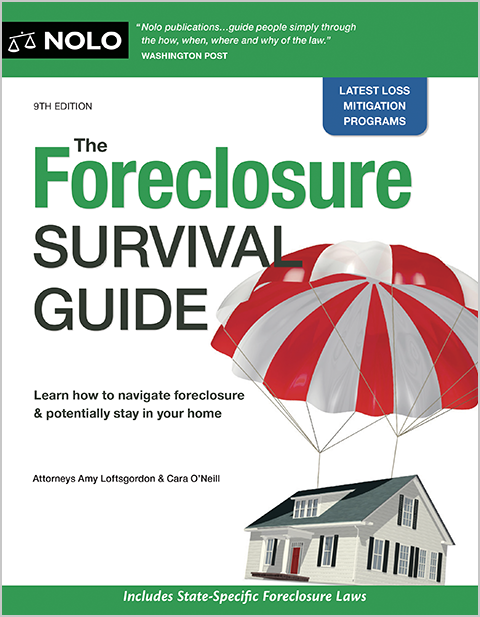Save money by asking your mortgage company to cancel your private mortgage insurance (PMI).
Private mortgage insurance (PMI) protects the lender if you default on your mortgage payments, and your house isn't worth enough to entirely repay the lender through a foreclosure sale.
You pay the premiums, and lenders almost always require PMI for conventional loans where the down payment is less than 20%. The lender adds the cost of PMI to your mortgage payment each month in an amount based on how much you've borrowed.
The good news is that PMI can usually be canceled when you have sufficient equity in the property.
When the Law Requires a Lender to Cancel PMI
The federal Homeowners Protection Act, which applies to people who bought their homes after July 29, 1999, established some baseline rules about canceling PMI. The law says you can ask that your PMI be canceled when you've paid down your mortgage to 80% of the loan. (12 U.S.C. § 4901 (2024).)
If you meet all of the following conditions, the lender must grant your request to cancel the PMI.
- You must have a good record of payment and compliance with the terms of your mortgage.
- You must make a written request.
- You must be current on payments.
- You have to show that the property's value hasn't gone down.
- You also have to show that you haven't encumbered the property with liens, such as a second mortgage. (12 U.S.C. § 4902 (2024).)
When the Lender Must Automatically Cancel PMI
What's more, when you've paid down your mortgage to 78% of the original loan, the law says that the lender must automatically cancel your PMI. (12 U.S.C. § 4901 (2024).) But don't count on the lender to notice—keep track of the date yourself.
Unfortunately, it might take years to get to this point. Because of amortization, your schedule of payments is front-loaded so that you're mostly paying off the interest at first.
When You Can Get Your PMI Canceled
Even if you haven't paid down your mortgage to one of these legal limits, you can start trying to get your PMI canceled as soon as you suspect that your equity in your home or your home's value has gone up significantly, perhaps because your home's value has risen along with other local homes or because you've remodeled.
Such value-based rises in equity are harder to prove to your lender. Some lenders require you to wait a minimum time (around two years) before they will approve the cancellation of PMI on this basis and your mortgage balance might need to be paid down to 75%.
How to Get Rid of Your PMI
The exact procedures for getting your lender to cancel your PMI are largely in the hands of your lender or, to be more accurate, in the hands of the company from whom your lender buys the insurance (though you'll never deal with that company directly). You'll most likely need to:
- Contact your lender to find out the appropriate PMI cancellation procedures. It's best to contact your mortgage lender, formally requesting guidelines.
- Get your home appraised by a professional to find out its current market value. Your lender might require an appraisal even if you're asking for a cancellation based on your many payments. The lender needs reassurance that the home hasn't declined in value. Although you'll normally pay the appraiser's fee, it's best to use an appraiser whom your lender recommends and whose findings the lender will therefore respect. (Note: Your tax assessment might show an entirely different value from the appraiser's. But don't be concerned. Tax assessments often lag behind, and the tax assessor won't see the appraiser's report.)
- Calculate your "loan to value" (LTV) ratio using the results of the appraisal. This is a simple calculation. Just divide your loan amount by your home's value to get a figure that should be in decimal points. If, for example, your loan is $200,000 and your home is appraised at $250,000, your LTV ratio is 0.8, or 80%.
- Compare your "loan-to-value" (LTV) ratio to that required by the lender. Most lenders require that your LTV ratio be 80% or lower before they will cancel your PMI. Note: Some lenders express the percentage in reverse, requiring at least 20% equity in the property, for example. When your LTV ratio reaches 78% based on the original value of your home, remember that the Homeowners Protection Act might require your lender to cancel your PMI without your asking. If the loan-to-value ratio is at the percentage required by your lender, follow the lender's stated procedures for requesting a PMI cancellation.
If Your Lender Refuses to Cancel the PMI
Most lenders recognize that there's little point in requiring PMI after it's clear that you're making your mortgage payments on time and that you have enough equity in your property to cover the loan if the lender has to foreclose. Nevertheless, many homebuyers find their lenders to be frustratingly slow to cancel the coverage. The fact that they'll have to spend time reviewing your file for no immediate gain and that the insurance company might also drag its feet are probably contributing factors.
If your lender refuses or is slow to act on your PMI cancellation request, politely but firmly request action. Contact the lender by letter or email. Copies of such communication are important to prod the lender into motion and serve as evidence if you're later forced to take the lender to court.
You can also submit a complaint online to the Consumer Finance Protection Bureau (CFPB). This U.S. government agency promises to forward your complaint to the company and work to get a response.
If nothing else works, and court action becomes your best option, small claims court can be a good avenue, and you won't need a lawyer to accompany you. For more information, including how to write polite but forceful demand letters, see Everybody's Guide to Small Claims Court, by Cara O'Neill (Nolo). For online information on going to small claims court, see Nolo's Small Claims Court FAQ.
Get More Information
To learn more about PMI and other aspects of buying a home, see Nolo's Essential Guide to Buying Your First Home, by Ilona Bray and Ann O'Connell (Nolo).

